Topics:
Never Miss a Beat - Get Updates Direct to Your Inbox
FILTER:


Sales and Inventory Forecasting Strategies for Amazon FBA Sellers
By Ian Drogin


Accurate inventory and sales forecasting is an essential element to FBA seller success. Whether you’re a $10K or $10MM seller, your business is only as strong as the forecasting and management systems you have in place.
Effective forecasting helps to ensure that you don’t have too much or too little inventory (either trapping your cash flow or missing out on profits) and enables you to more effectively negotiate with suppliers. It also provides a more reliable baseline so you can understand why some products are over or underperforming.
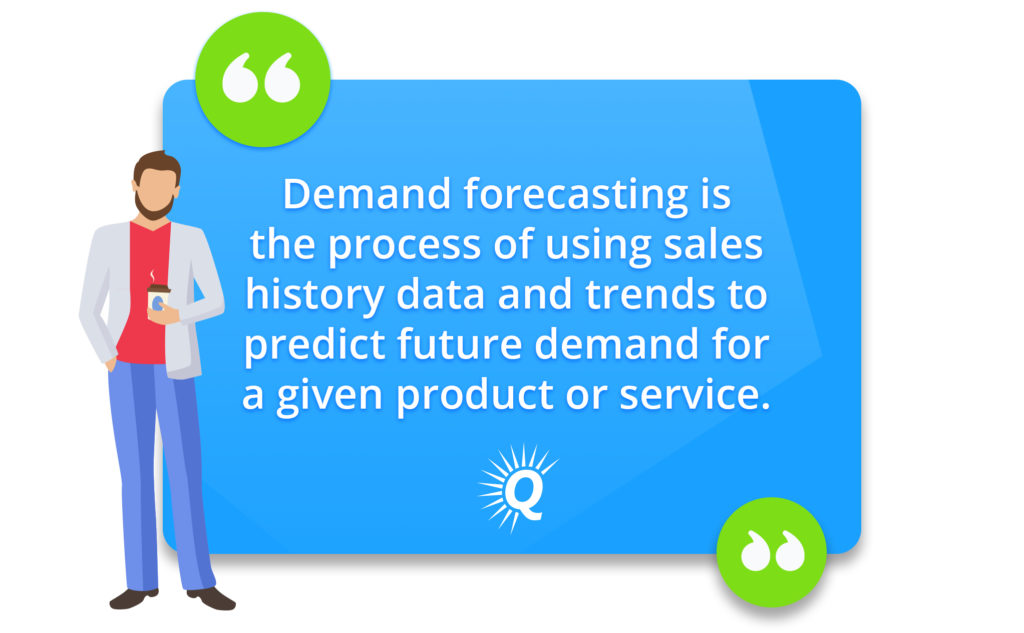

This article will share simple yet powerful inventory and sales forecasting strategies that you can start using immediately in your FBA business to improve sales, eliminate wasteful spending, manage cash flow, and increase your bottom line.
There are a few different kinds of forecasts that are important when it comes to making smart inventory management decisions. Let’s start with the broadest: demand forecasting.
Why Does Demand Forecasting Matter?
Before diving into why demand forecasting is important in your Amazon FBA business, let’s be clear on the term’s meaning…
What Is Demand Forecasting?
Put simply, demand forecasting is the process of using sales history data and trends to predict future demand for a given product or service. In other words, demand forecasting seeks to determine how many customers will be willing to purchase a given product, at a given price point, at a specific time in the future.
Benefits of Demand Forecasting
Some new FBA sellers ask, “why does demand forecasting matter?” The answer is simple yet important:
- Effective inventory management
- Efficient capital utilization
- Identifying opportunities and threats
When you have an effective demand planning strategy in place as an Amazon vendor, it becomes much easier to understand how much inventory you should have in stock for each SKU. Instead of using gut instincts or rough estimations, an accurate demand forecast helps you to know exactly what you should expect within the market you serve.
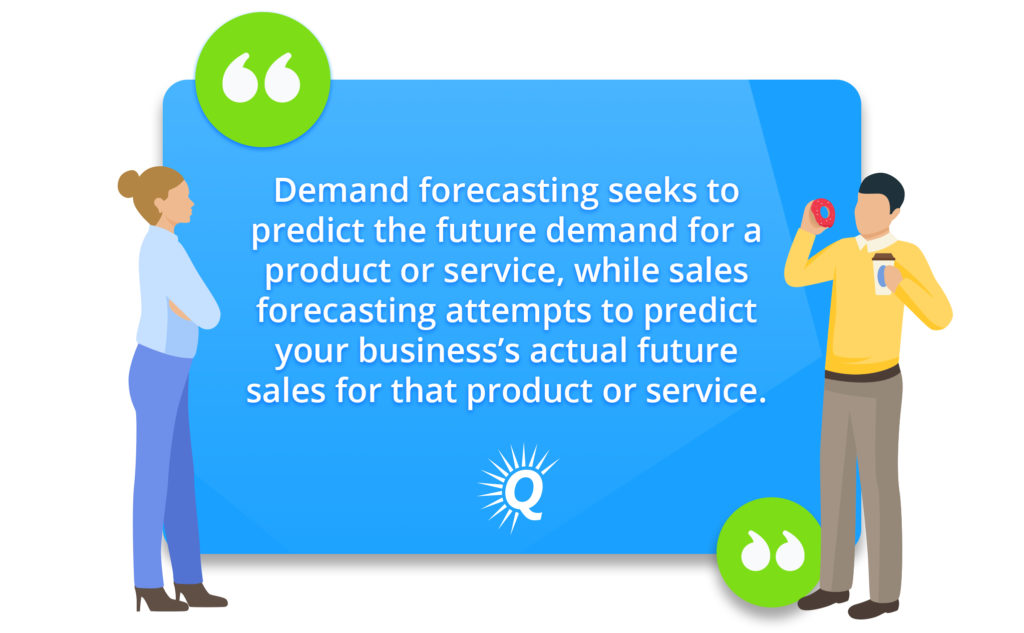

When you understand the future market demand for your products, it becomes easier to plan ahead and make inventory purchases accordingly. This can minimize excess inventory, decrease the chances of stockout, and optimize your working capital efficiency.
Additionally, insightful forecasts can reveal opportunities that owners should be aware of. Similarly, demand forecasting can shed light on threats that need to be addressed sooner rather than later. Both are discussed in later sections of this article.


Different Types of Demand Forecasting
There are a few primary types of demand forecasting, including:
- Passive
- Active
- Short-Term
- Medium-To-Long-Term
- External
- Internal
Passive Demand Forecasting
Passive demand forecasting is sometimes used for very stable businesses and involves creating demand forecasts based on simple, historical data. Unlike some other forecasting methods, it doesn’t account for more complex trends and patterns that affect most businesses. For this reason, passive demand forecasting typically isn’t appropriate for Amazon FBA businesses.
Active Demand Forecasting
Active demand forecasting uses market research to forecast demand for specific products. It is often used by newly established businesses that have minimal data to use for forecasting purposes.
Short-Term Demand Forecasting
Short-term demand forecasting generally includes forecasts that attempt to predict demand for the upcoming three-to-twelve months. These have a higher degree of forecast accuracy and are often used for inventory management, setting marketing budgets, and creating other budgets for operational purposes.
Medium-To-Long-Term Demand Forecasting
Medium and long-term demand forecasting often covers a date range between 12 and 24 months into the future. Because the time frame is more distant, the forecasting accuracy is often less than short-term forecasts. However, long-term demand forecasts are crucial when it comes to determining long-term strategies and decisions.
External Demand Forecasting
External forecasting, also known as external macro-level demand forecasting, seeks to predict more broad industry-wide shifts based on environmental, economic, or technological changes.
In other words, it looks carefully at the fundamental drivers of market demand and attempts to forecast demand based on these elements. Larger companies often use such forecasts when determining long-term strategies.
Internal Demand Forecasting
Internal forecasting, also known as internal business level demand forecasting, addresses internal business operations and metrics.
Sales Forecasting vs. Demand Forecasting
There is often confusion between sales forecasting and demand forecasting. Although they can be very similar to one another, there are some key differences of which to be aware of.


Demand forecasting seeks to predict the future demand for a product or service, while sales forecasting attempts to predict your business’s actual future sales for that product or service.
In an ideal world, these numbers would be exactly the same. If everything was perfect, you would be able to sell your products to every single customer who wants to buy during a given period of time. However, more often than not, you aren’t able to succeed in accessing the entire market.
Why Are Demand and Sales Forecasts Often Different?
It’s great when there’s a huge demand for what you’re selling. Indeed, without market demand, it’s impossible to successfully sell your products.
While demand is important, there are other factors that are relevant when it comes to determining your actual sales volume.
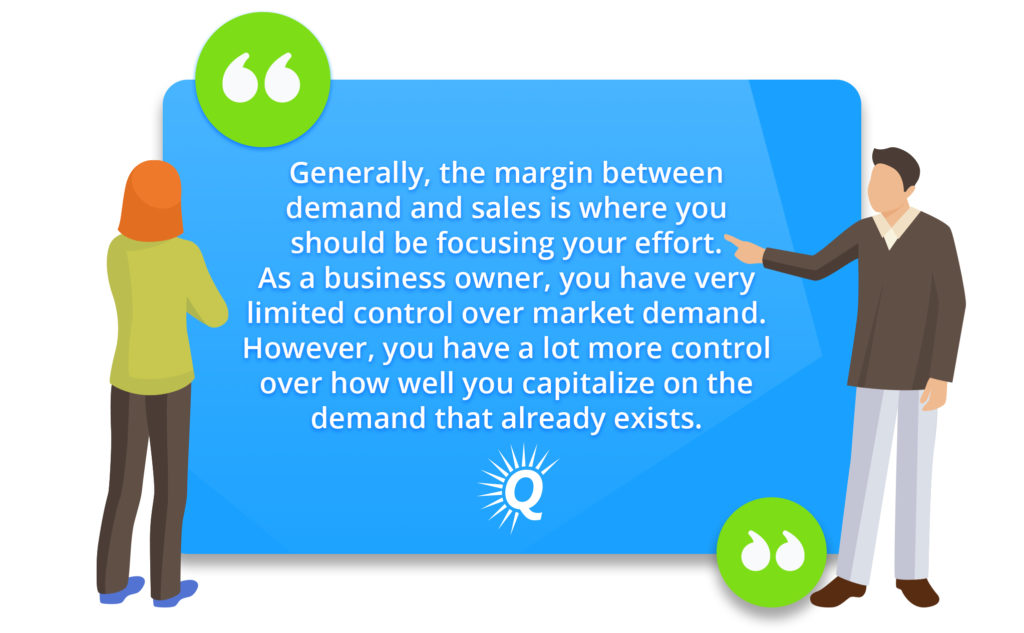

For example, let’s say that your demand forecast shows that there are 100,000 monthly customers for a certain product that you offer. However, because you only rank for a few important keywords, you only have access to 10,000 of those customers. Additionally, you also only have inventory 70% of the time.
Based on this, your sales forecast might only be 7,000 units per month—a significant difference from the active 100,000 monthly customers in the marketplace.
Why Are Demand and Sales Forecasting Both Important?
Sales and demand forecasting are both necessary. In fact, together, they reveal where the opportunities truly lie in your market.
Generally, the margin between demand and sales is where you should be focusing your effort. As a business owner, you have limited control over market demand. However, you have total control over how well you capitalize on the existing demand.
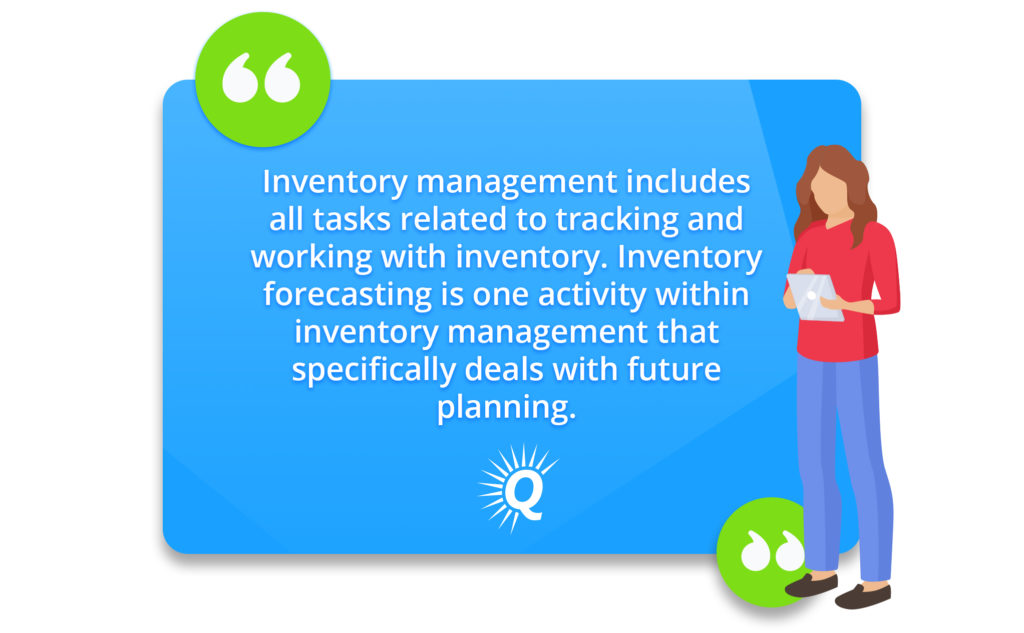

By comparing your demand forecast with your sales forecast, you can identify ways to close the gap between the two numbers. This may mean focusing on ranking for more keywords through aggressive ad campaigns or focusing on inventory optimization. Alternatively, it might mean launching new color variations for your existing products to capture more customers.
Inventory Management vs. Inventory Forecasting
There are several essential elements involved with inventory tracking and planning for the future. Two of these are inventory management and inventory forecasting.
Inventory management includes all tasks related to tracking and working with inventory. Inventory forecasting is one activity within inventory management that is specifically relevant to future planning.
Inventory Management Activities
Because inventory management covers every aspect regarding inventory, it is a broad term that describes numerous activities. Some of these include:
- Communicating with suppliers
- Quality control (QC)
- Placing inventory orders
- Tracking shipments
- Receiving inventory shipments (in certain cases)
- Tracking stock levels at multiple warehouse locations
- Resolving mis-shipments and defective batches of inventory
- Optimizing supply chains
- Inventory forecasting
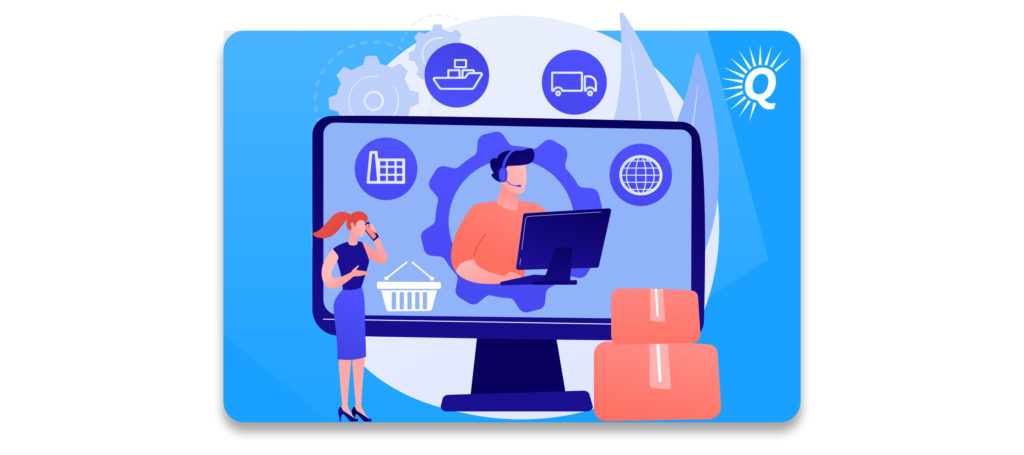

Managing inventory typically includes communicating with suppliers to negotiate inventory cost, shipping terms, lead times, and other logistical details required for inventory orders. Communication with the supplier will also facilitate the process of getting inventory to the destination FBA warehouse.
In the beginning, setting up a new supply chain can be a very time-intensive process. Some new sellers choose to work with an Amazon selling coach to streamline the process.
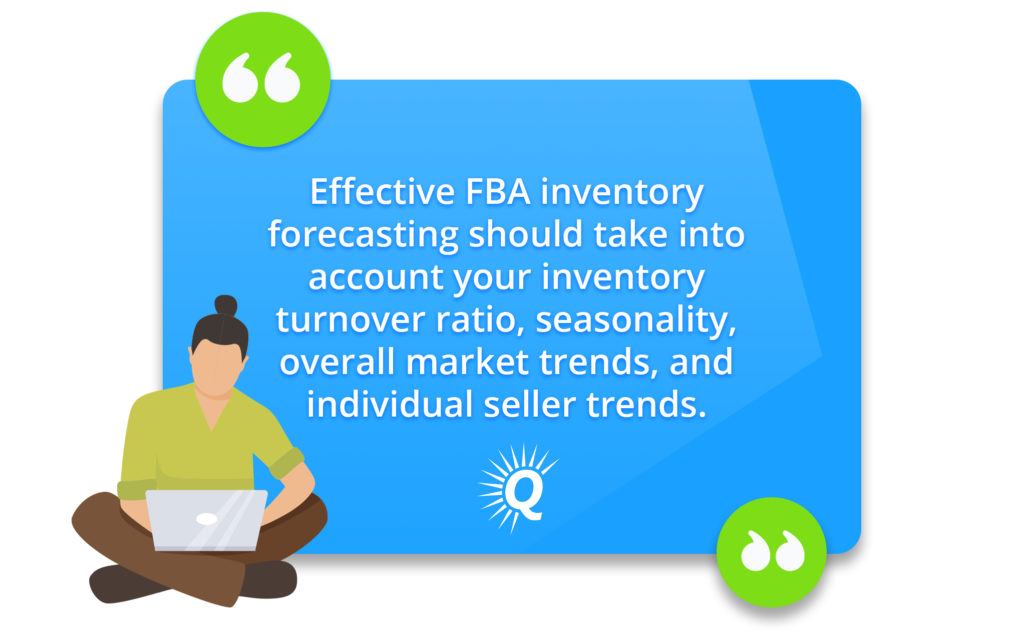

Once the supply chain is established, most FBA business owners will create a detailed Standard Operating Procedure (SOP) for managing each purchase order, overseeing a QC process, and tracking shipments, all of which are considered to be inventory management activities.
Some sellers choose to warehouse inventory themselves, although most utilize Amazon’s FBA fulfillment infrastructure to receive inventory.
In unfortunate situations, sellers are required to address mis-shipments or defective batches of inventory. If such a mishap occurs, Amazon business owners must work with suppliers to resolve the issue.


In addition to handling daily inventory management activities and overseeing Amazon orders, smart Amazon sellers are also constantly searching for methods to optimize their supply chains.
This eliminates excessive FBA fees and any long-term storage fees, improves product quality, and ensures that everything runs smoothly on the Amazon marketplace. Additionally, they use inventory forecasts to guide their purchasing decisions and ultimately, maximize Amazon sales.
Best Practices for Inventory Forecasting
When used effectively, inventory forecasting can dramatically help reduce stockout, minimize FBA storage fees, increase capital efficiency, and maximize sales.
Effective FBA inventory forecasting should take into account your inventory turnover ratio, seasonality, overall market trends, and individual seller trends.
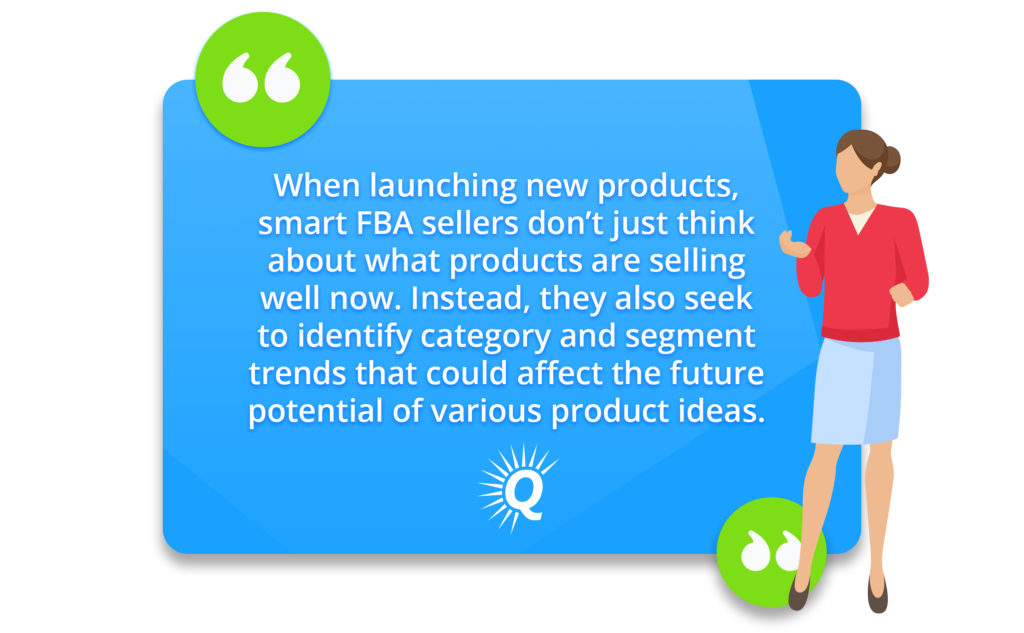

Accurate inventory forecasting should provide you with a clear idea of what your stock level should be at any given time for your FBA inventory so you never miss an Amazon shipment.
Based on your inventory forecast, you can establish an inventory reorder point, which allows you to maintain a healthy level of Amazon inventory.
There are several different factors that determine what your reorder point should be, including:
- Expected sales volume
- Storage fees
- Production lead time
As an Amazon seller, the goal with any inventory forecasting practice should always be to guarantee you have the right amount of stock at all times at an Amazon fulfillment center to maintain your sales velocity. Accurate forecasting can help you achieve that.
Identifying Category and Segment Trends
When most sellers think about inventory and demand trends, their priority is to make certain that they don’t run out of inventory while also avoiding unnecessary FBA storage fees. While these two elements are important, forecasting can also be used to identify longer-term opportunities.
When launching new products, smart FBA sellers don’t just think about what products are selling well now. Instead, they also seek to identify category and segment trends that could affect the future potential of various product ideas.
Understanding Category Trends
Within each product category on Amazon, there are important trends that affect the opportunities available for launching new products. Some of these trends include:
- Seasonality
- Customer demand
- Competition
- Advertising
- Cost of Goods Sold (COGS)
It’s no surprise that different product categories experience different seasonality. If you’re selling beach balls, you’ll likely see a much different seasonal sales graph than if you’re selling winter coats. Understanding seasonality is an important part of the product selection process.
Looking for general trends in customer demand is another major variable to examine. Google trends can be helpful for understanding more general trend information, while Amazon-specific software such as Jungle Scout or Helium 10 can provide more precise platform data and sales trends.


In addition to looking at demand trends, a seller needs to look at what’s happening within the competitive landscape.
If you notice that a certain product category is experiencing a rapid influx of sellers, that might be something salient to consider when making your product launch decisions. Not only could that make it more difficult to rank for the right keywords, but it could also increase your advertising costs.
Raw materials and COGS trends are another factor that should be considered in your product selection process.
Understanding Segment Trends
Many Amazon sellers focus primarily on product trends. Those are certainly key, but it’s also crucial to pay attention to trends that have to do with people.
When you look beyond the numerical sales data and examine who is purchasing your products, it can drastically inform your future strategies.
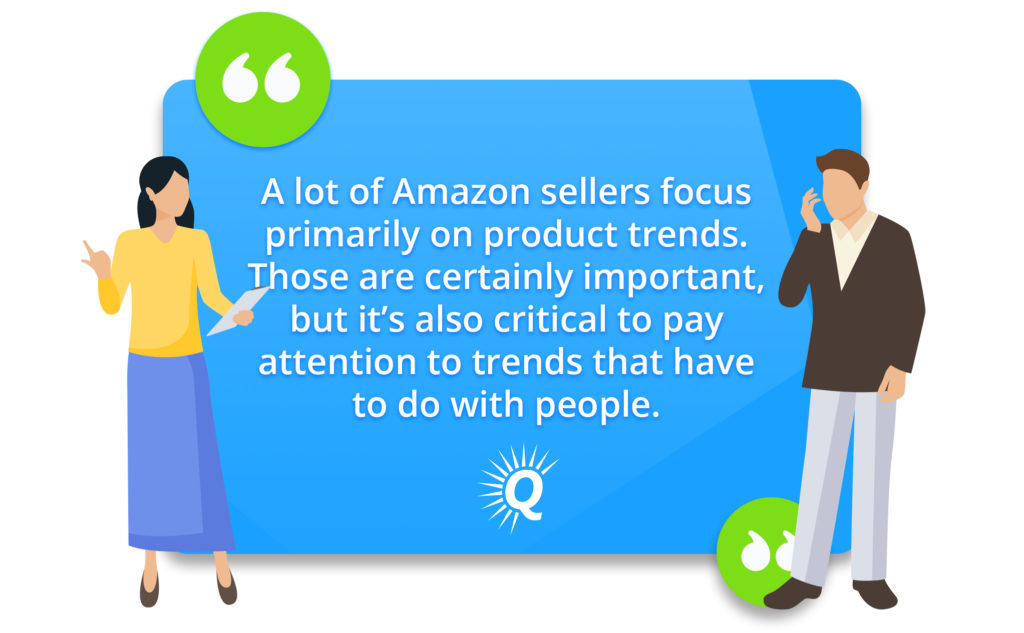

For example, if you’re able to determine that a certain demographic is a steadily growing market segment in your business, it provides you with the opportunity to target them more effectively. This includes both developing new products and customizing your marketing efforts to satisfy their search needs.
Seasonality Adjusted Demand Forecasting
Seasonality is paramount when considering your demand forecasting. Therefore, it’s important to use the right data to create an accurate forecast.
A seasonally-adjusted demand forecast should be based on both current demand as well as seasonal trends.
In addition to creating a seasonally adjusted demand forecast, it’s also important to have a seasonally adjusted sales forecast and moving average, since those are what you’ll be using to make inventory purchase decisions.
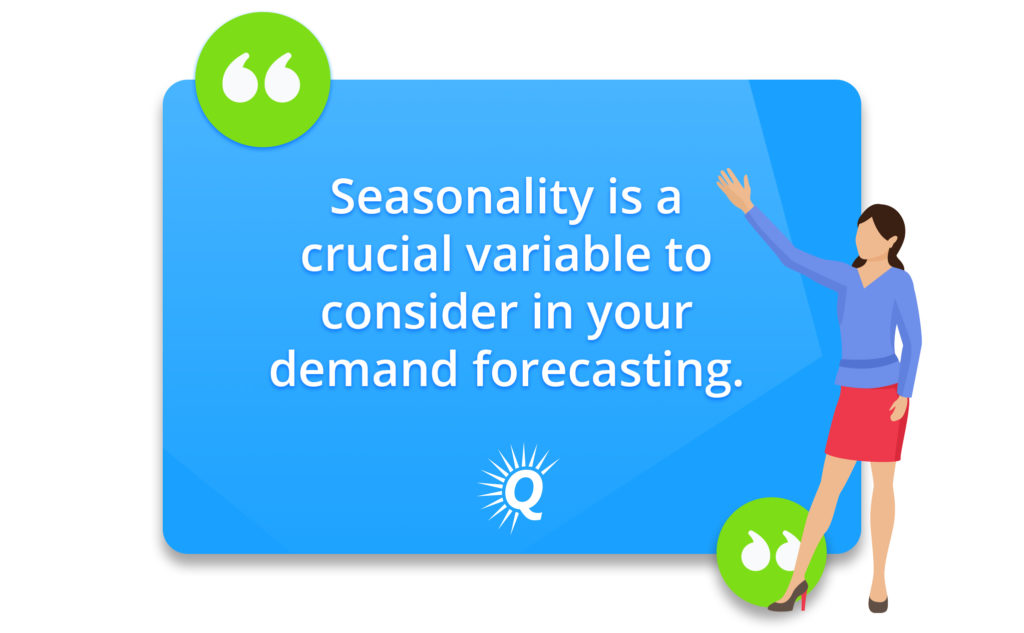

A seasonally adjusted sales forecast should be based both on current sales volumes as well as seasonal trends. Google trends, Jungle Scout, and Helium 10 can all be used to help you create such a forecast.
It’s important to note that some products experience a very sharp seasonal effect, while others barely experience one at all.
How to Use Inventory Forecasting Software to Automate Your Inventory Management Processes
Just like basic math, it’s important to understand inventory management fundamentals.
However, that doesn’t mean you can’t use technology to shortcut the process of performing calculations and automate your inventory management activities.
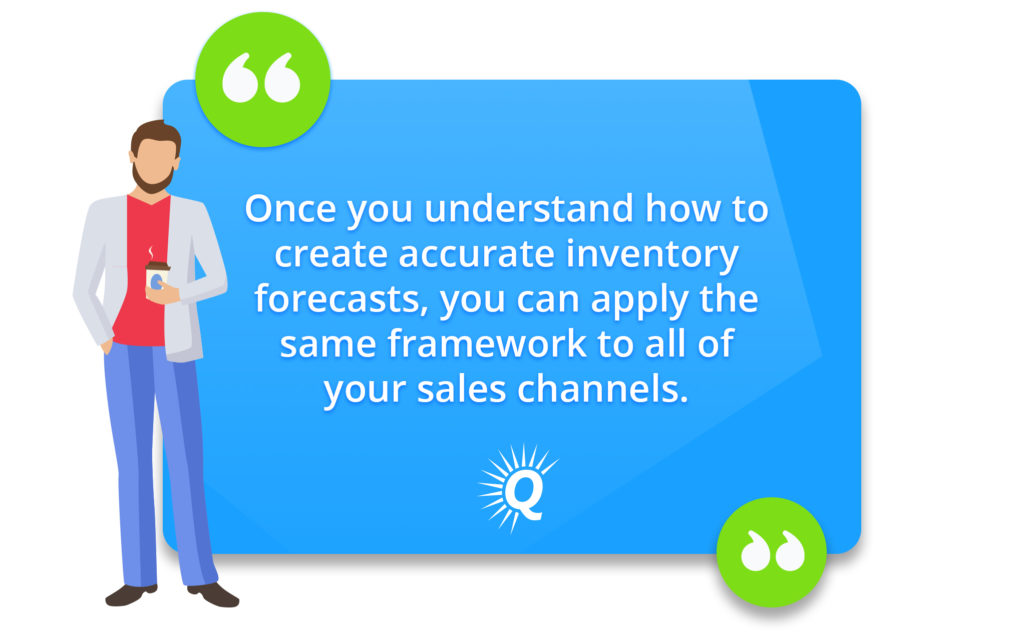

Luckily, there are several inventory management software programs that you can use as an inventory planner for all of your FBA products, just as Amazon Seller Central tracks each sale.
Everything from monitoring your inventory level to setting reorder points can be managed within a simple software interface.
Here are some software choices to help you with inventory optimization.
Simply sign up with the software of your choice, connect your accounts, provide the necessary information, and set up your complete inventory management system. An effective inventory management program can be an invaluable Amazon seller tool.
Learn How to Use Inventory Forecasting for Managing FBA, FBM, and Online Stores with Combined Sales Channels
Once you understand how to create accurate inventory forecasts, you can apply the same framework to all of your sales channels.
Much of the software mentioned above can connect to multiple platforms, making it easy to track all of your inventory management activities on one dashboard for your ecommerce business.
To create inventory forecasts for combined channels, simply create a forecast for each sales channel individually and then combine them to determine your total inventory requirements. By following this framework, you should be able to maintain healthy inventory levels to satisfy each of your sales channels throughout the year.





